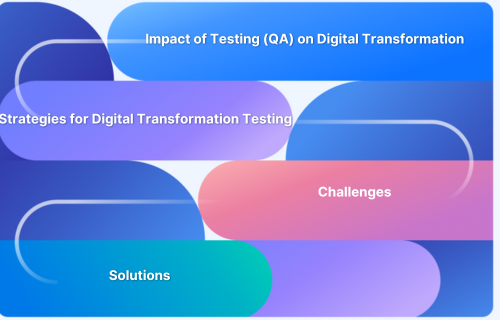Digital Transformation and Culture in Quality Engineering
Dileep Marway, BrowserStack Champion - July 4, 2023
We talk about digital transformation, though it is often not discussed that without the right culture, the transformation will ultimately fail.
A successful digital transformation is built upon self-drive, high-performing individuals, and a culture of trust. In companies where digital transformation thrives, the culture often thrives, and the whole team is aligned to meet the goal.
Think of it as a balancing act. One cannot thrive without the other.
- What is culture?
- Why does culture matter?
- What should your company culture include?
- How can we ensure that culture is in line with the digital strategy?
- 1. Removing silos between teams
- 2. Becoming comfortable with risk
- 3. Support from top to bottom of the organization
What is culture?
Culture happens whether you want it to or not. It is the DNA of a company, and largely, it is influenced by the founders – not by their words so much as their actions. For example, a kind, trusting founder will impart this way of working to the rest of their team.
Strategy and culture need to mutually support each other.
Culture is led by beliefs, attitudes, practices, and customs that people are exposed to when interacting with your business.
Why does culture matter?
There is evidence that great cultures create a feedback loop that often self-corrects bad strategy and also that good strategy gets consumed by bad culture.
From experience, culture will help to create a higher chance of great delivery output – take a happy environment. Generally, there will be learning, and the team will be rowing in the same direction.
People do not leave the company. They leave the culture.
What should your company culture include?
Remember that culture is more than just creating a great place to work. The culture should determine what is encouraged, discouraged, and acceptable.
It includes:
- Adaptiveness to change – in business, we need to adapt quickly.
- Innovation – making great new products to keep ahead of the competition.
- Risk tolerance – how much risk are we willing to take?
- Decision making – being brave to make decisions, even when they may fail.
- Efficiency – ensuring that we are efficient in our output.
- Customer focus – how is our culture driving what a customer wants?
How can we ensure that culture is in line with the digital strategy?
1. Removing silos between teams
In the past, I have been a big advocate for dedicated teams who fulfill end-to-end journeys.
For example, I have seen innovation committees at the board level that decide what new features should be added. The problem with this is that the committee is not close enough to the customer’s needs, and those on the ground understand the system better. Removing this type of silo is key.
Get the whole team involved and get as much feedback as possible.
2. Becoming comfortable with risk
As they say, the biggest risk in business is actually not taking risks.
I’m not saying that we should take silly risks that impact the roadmap and bottom line, though taking calculated risks that may turn into rewards in the future.
Taking no risks is also a big risk in itself.
3. Support from top to bottom of the organization
Leaders should change their style from top-down decision-makers to actually acting as coaches.
If they can coach others and be invested in offering support, the whole company can align to the same goal.
Challenges in Achieving a digital culture
- A reluctance to let go of existing procedures. As they say, ‘change is the only constant’ – the ability to deal with change can get stronger over time. What helps is that successful change can greatly impact the revenue generated.
- Emphasizing infrastructural costs above everything else. Looking at your risks holistically can make a difference.
- Inconsistent resource allocation. Having your resources stretched too thin can impact the output.
- Being wary of automation. Automation can be a massive enabler in digital transformation, though it needs to be planned accordingly and tweaked to ensure it gives the right business output.
Conclusion
Digital transformation can only be achieved if it is designed around people, adopted based on experiences, and past learnings are kept in mind.
An open culture in which employees are positioned centrally as the primary factor will certainly make a massive difference.
The decision-makers and business leaders will be able to ensure that their digital transformation ideas translate to a successful reality by pushing that a healthy company culture is at the heart of this!



